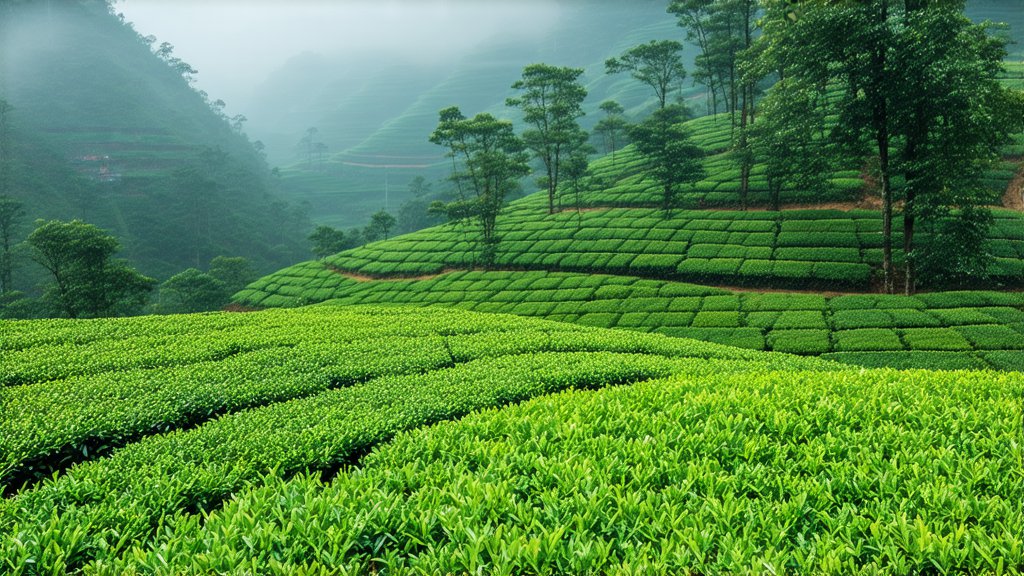
The Timeless Elegance of Fujian's White Peony Tea
In the lush and verdant landscapes of Fujian Province, nestled amidst rolling hills and mist-covered valleys, lies a treasure trove of tea culture that has been cherished for centuries. Among the myriad varieties of Chinese teas, White Peony Tea (Bai Mudan), stands out as an epitome of elegance and refinement. This exquisite tea, hailing from the heartland of Chinese tea production, offers a glimpse into the rich history, intricate craftsmanship, and unparalleled flavor profiles that have made it a favorite among connoisseurs worldwide.
Historical Background
White Peony Tea traces its origins back to the early Tang Dynasty (618-907 AD), a period marked by significant cultural exchanges and the flourishing of arts and sciences in China. It was during this time that tea cultivation and processing techniques began to evolve, leading to the development of various tea categories. White Peony Tea, known as "Bai Mudan" in Mandarin, translates to "White Peony," symbolizing purity and grace, characteristics that perfectly encapsulate the essence of this tea.
The legend surrounding its discovery is as enchanting as the tea itself. According to ancient folklore, White Peony Tea was first created by a tea farmer named Wei who stumbled upon the unique processing method accidentally. While tending to his tea garden, he noticed that certain leaves had naturally withered under the sun, developing a distinct aroma and taste when brewed. Intrigued, he replicated the process intentionally, giving birth to what we now know as White Peony Tea.
Varietals and Characteristics
White Peony Tea primarily consists of two main types: Gong Mei (Tribute Grade) and Xu Mei (Governor’s Grade). Both are distinguished by their use of specific parts of the Camellia sinensis plant and their meticulous preparation methods.
-
Gong Mei: This premium grade features young shoots and one or two leaves. It is characterized by its slender appearance, silvery down, and a slightly twisted form. The brewed tea exhibits a pale yellow color, with a subtle floral aroma and a sweet, refreshing taste that lingers on the palate.
-
Xu Mei: Slightly less refined than Gong Mei, Xu Mei includes more mature leaves and buds. It has a fuller body and a more robust flavor profile while still maintaining the characteristic lightness and delicacy associated with white teas. Its infusion yields a golden-yellow hue, accompanied by hints of honey and a mild vegetal undertone.
Craftsmanship and Production
The art of making White Peony Tea is a testament to the skill and dedication of tea masters in Fujian Province. The process begins in late spring when the tender new shoots and leaves are hand-picked with precision. Only the finest quality leaves are selected, ensuring that each bud retains its natural downy covering, which contributes to the tea's unique flavor and aroma.
Following harvesting, the leaves undergo a series of meticulous steps:
-
Withering: Freshly picked leaves are spread out thinly on bamboo mats or screens and left to wilt under the sun or in shaded areas. This step reduces moisture content while allowing enzymatic activity to initiate subtle oxidation, enhancing the tea's fragrance.
-
Air Drying: After withering, the leaves are moved indoors for further drying. This phase involves gentle air circulation to remove remaining moisture without applying direct heat, preserving the leaves' natural properties.
-
Sorting and Grading: Once dried, the tea is sorted according to size and quality. Higher grades like Gong Mei consist of uniformly shaped leaves with minimal stems and impurities, whereas lower grades may include more leaf fragments and stalks.
-
Packaging: Finally, the sorted tea is carefully packaged in airtight containers to protect it from moisture and odors until it reaches consumers worldwide.
Appreciating White Peony Tea
To truly appreciate the nuances of White Peony Tea, one must engage in a mindful tasting ritual that honors its delicate nature. Here's a guide to savoring this exceptional beverage:
-
Preparation: Use water at around 80°C (175°F) to avoid scalding the delicate leaves. Rinse a gaiwan or glass teapot with hot water before adding approximately 5 grams of loose leaf tea per 150ml of water.
-
Infusion: Steep the tea for about 2-3 minutes for the first infusion. Subsequent steepings can be extended gradually, up to 5 minutes or longer, depending on personal preference. Each infusion reveals different layers of flavor and aroma.
-
Observation: Admire the tea's appearance as it unfurls in water, revealing its beautiful silver and green hues. Note the clarity and color of the infusion, which should range from pale yellow to golden yellow.
-
Aroma: Inhale deeply to capture the tea's subtle floral notes, followed by hints of earthiness and sweetness. The fragrance should be clean and inviting, reflecting the purity of the tea.
-
Tasting: Take small sips, allowing the tea to coat your mouth and tongue fully. Notice the initial sweetness, followed by a gentle astringency and a lingering aftertaste that speaks of its high mountain origins.
-
Reflection: As you enjoy each cup, take a moment to appreciate the craftsmanship and tradition embedded within every sip. Reflect on the journey of these leaves from the misty mountains of Fujian to your teacup, allowing yourself to be transported to a place of tranquility and harmony.
In conclusion, White Peony Tea is not merely a beverage; it is an experience—a bridge connecting us to ancient traditions, the natural world, and our own inner calm. With its delicate flavors, enduring legacy, and profound cultural significance, this tea invites us to slow down, savor life's simple pleasures, one cup at a time.